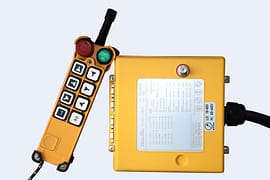Steel Frame Structures: High Strength, Lightweight & Earthquake-Resistant Designs
Steel frame structures refers to a structural system primarily made of steel, connected through methods such as welding, bolting, or riveting. Steel structures are widely used in various engineering fields, including buildings, bridges, industrial plants, energy facilities, and towers. Due to its high strength, light weight, and fast construction, steel frame structure has become one of the most important forms of construction in modern architecture.
Features
- High Strength: Steel has high strength, and compared to other materials like concrete, steel structures can bear larger loads.
- Light Weight: Steel frame structures are relatively lightweight, which reduces the burden on the foundation under the same conditions.
- Good Seismic Performance: Steel has excellent toughness and plasticity, allowing it to absorb and dissipate seismic energy, providing superior earthquake resistance.
- Fast Construction Speed: Steel components can be prefabricated in factories and then transported to the construction site for assembly, significantly shortening the construction period.
- Environmentally Friendly and Recyclable: Steel is a recyclable material. After the structure is dismantled, the steel can be reused, meeting the requirements for sustainable development.
- Flexible Design: Steel frame structures can easily accommodate complex architectural designs and large-span structures as required by the project.
Construction Techniques
Steel Structure Processing and Fabrication
- Material Preparation: The first step in steel structure construction is selecting the appropriate steel materials, commonly carbon structural steel, low alloy steel, etc.
- Cutting and Shaping: Steel materials are cut, drilled, beveled, and processed according to the design drawings.
- Welding: The quality of welding in steel structures is crucial for the safety of the project. Prior to welding, strict welding procedure qualifications are required. Common welding methods include manual arc welding, gas shielded welding, etc.
Steel Component Assembly
- Steel component assembly is usually completed in the fabrication shop and then transported to the construction site. During assembly, it is essential to ensure that the connections between components are secure. Common connection methods include welding, bolting, and riveting.
- During the assembly process, particular attention must be paid to the verticality, horizontality, and other positional requirements of the components, with temporary supports and fixing devices used to ensure the stability of the components during installation.
Corrosion and Fire Protection Treatment for Steel Structures
- Corrosion Protection
Steel exposed to air for long periods is prone to corrosion. Therefore, surface treatment such as sandblasting and rust removal is required during construction. Common corrosion protection methods include applying anti-rust paint and hot-dip galvanizing. - Fire Protection
Since steel loses its strength at high temperatures, steel structures need to undergo fire protection treatments. Common fireproofing measures include spraying fire-resistant coatings and cladding with fireproof boards.
Inspection and Acceptance of Steel Structures
- After the steel frame structure is completed, strict inspections and acceptance procedures must be carried out. Inspection items include checking welding quality, bolted connections for tightness, and deformation of components. Common inspection methods include ultrasonic testing, radiographic testing, and magnetic particle testing.
Production Equipments


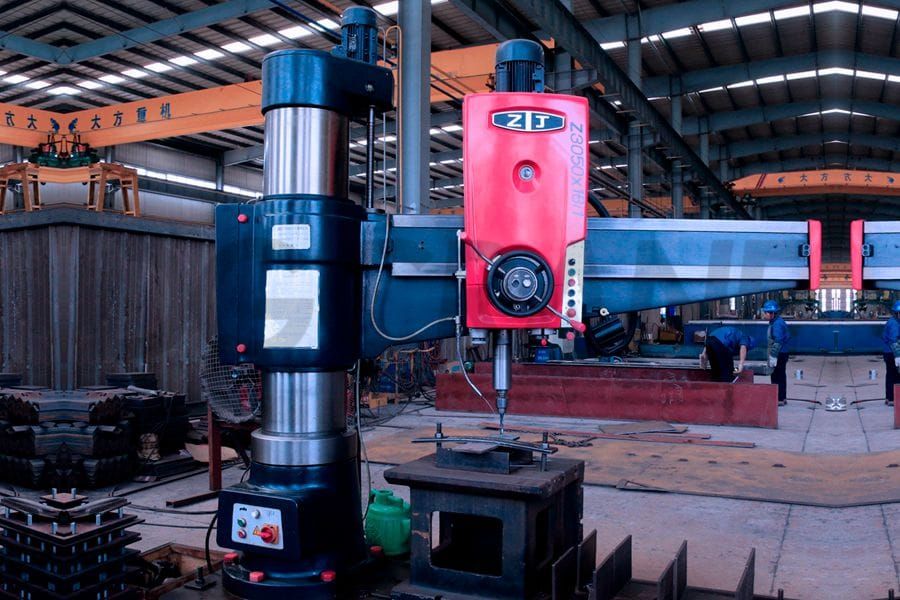







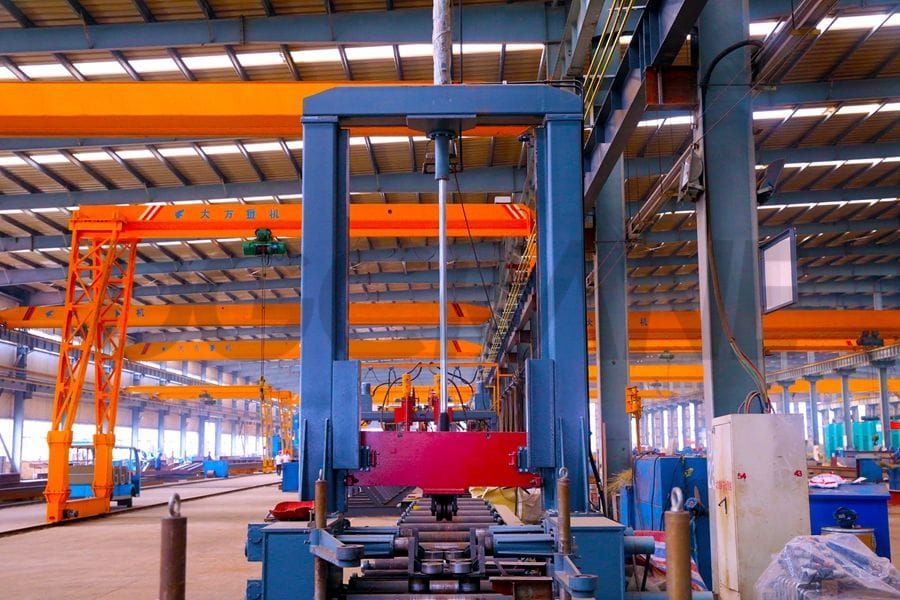

Application Areas
- Industrial Buildings: Steel frame structures are widely used in large-span industrial buildings, such as those in the automotive, aerospace, metallurgy, and chemical industries.
- High-Rise Buildings: Due to their light weight and high strength, steel frame structures are especially suitable for skyscrapers, commercial buildings, hotels, and other high-rise structures.
- Bridges and Transportation Infrastructure: The high strength of steel makes it ideal for bridge structures, particularly in designs requiring large spans.
- Energy Facilities: Steel frame structures are extensively used in the energy sector, including for power transmission towers and wind turbine towers.
- Other Buildings: Steel structures are also commonly used in buildings that require large spaces and special designs, such as sports arenas, exhibition halls, airports, and convention centers.
Cases
Single-Story Steel Structure Factories

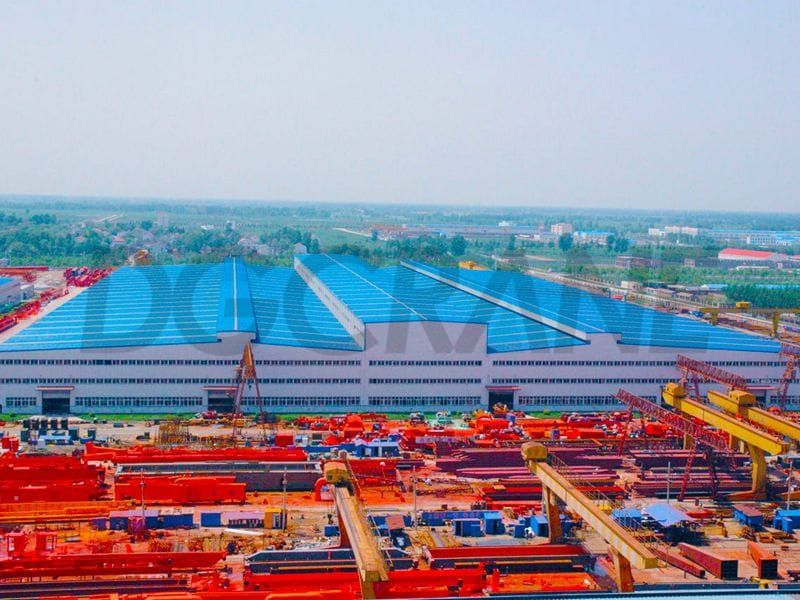
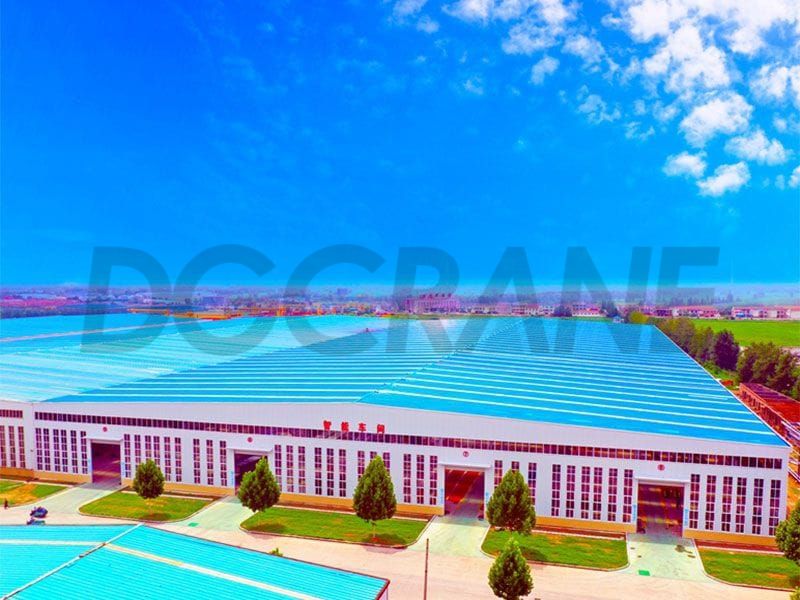
Multi-Story Steel Structure Factories



Non-Standard Steel Structure Factories

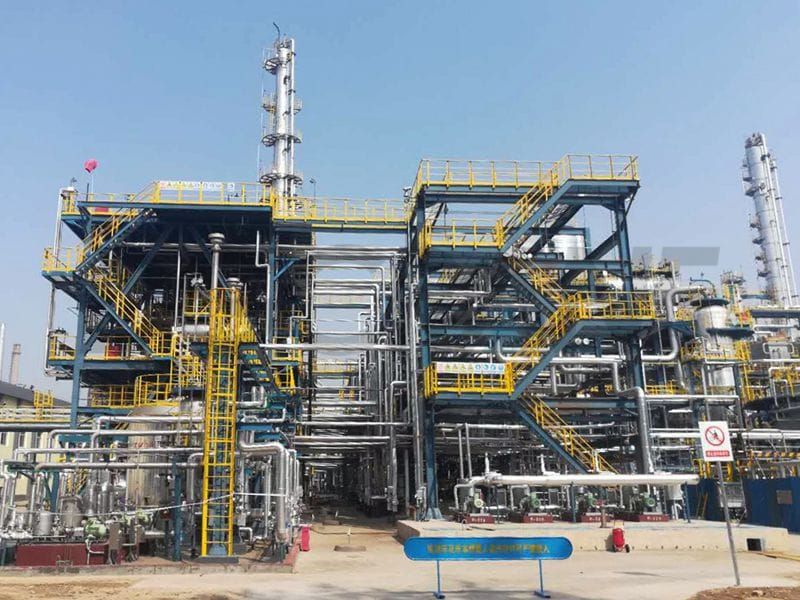

FAQS
What are the components of the cost of steel frame structures?
The cost of steel structures includes material costs, fabrication costs, transportation costs, installation costs, and corrosion and fire protection treatment costs. Design complexity, project scale, and construction requirements can also affect the total cost.
What is the lifespan of a steel frame structure?
Typically, steel structures last 50 years or more. With good design, quality materials, and regular maintenance, the lifespan can be extended to around 100 years.
How do we maintain steel frame structures?
Maintenance includes regular inspection of connection points, welds, corrosion treatment (such as touch-up painting), repairing damaged structures, and reinforcement when necessary.
Why is corrosion and fire protection treatment important for steel frame structures?
Corrosion and fire protection treatments prevent steel from rusting and losing strength at high temperatures, thereby extending the lifespan and ensuring the structural safety of the building.
Steel Frame Constructions For Your Project?
In the field of customized steel structures, we fully understand the uniqueness and complexity of each project, which is why we are committed to providing personalized solutions that precisely meet our clients’ needs. Whether it is design, production, or installation, our professional team will work closely with you throughout the entire process to ensure that every detail of the steel structure aligns perfectly with your project requirements.
From load-bearing capacity to adaptability to special environments, our customized services not only enhance the safety and efficiency of your project but also save you valuable time and costs. Choosing us means choosing a steel structure partner that balances both quality and flexibility.













































































































